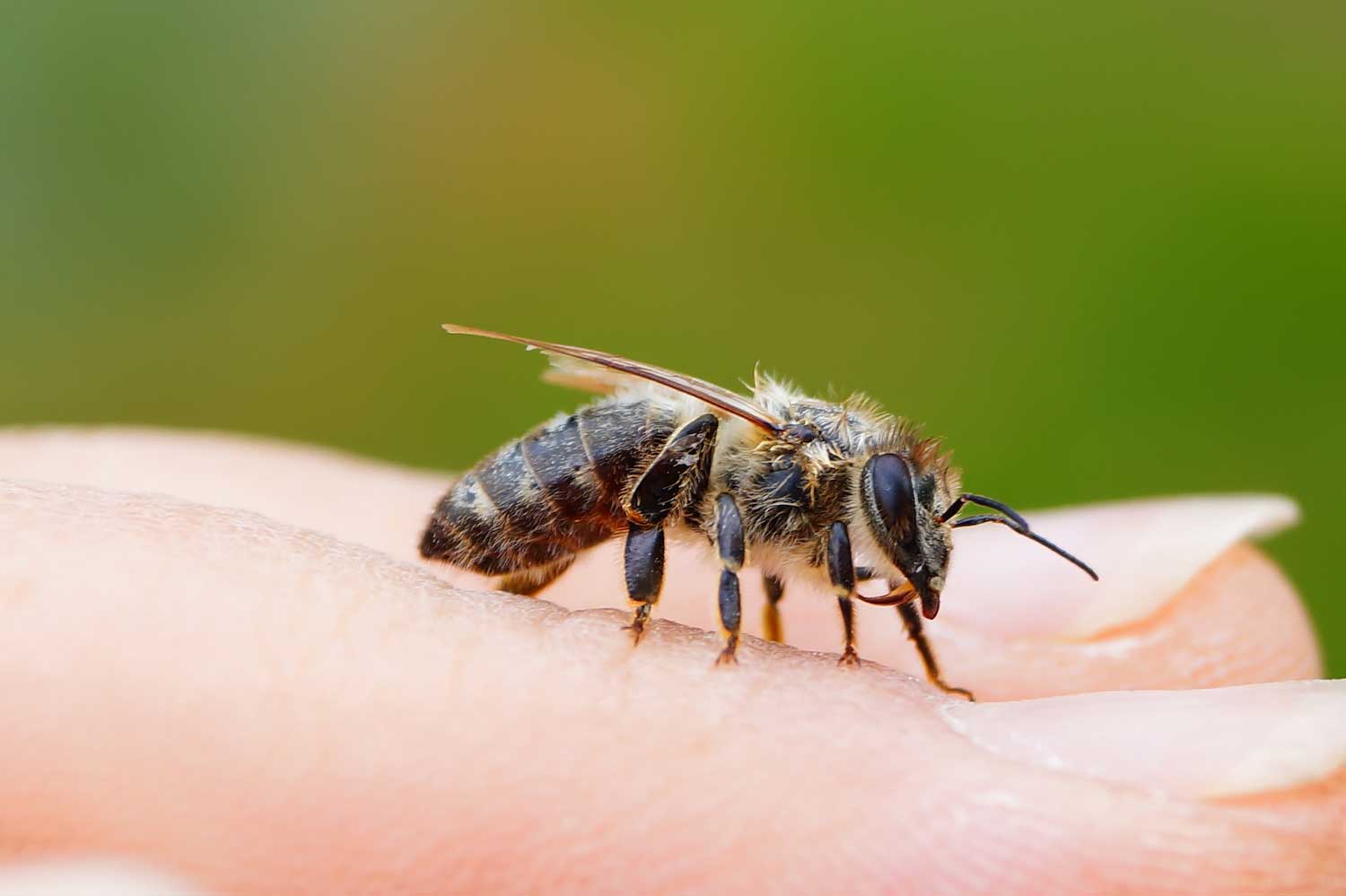Myth buster: Bees die when they sting you

You've no doubt been told that bees can sting only once and they die after stinging you — or anything or anyone else. This isn't exactly a myth, but it's not a universal truth either. Honeybees do, in fact, die after injecting their venom by way of their stinger. But other kinds of bees, along with hornets and wasps, do not. And many bee species don't have stingers at all.
Using their stingers is fatal for honeybees because of their anatomy. Their stingers are barbed, and these barbs get stuck in your skin when they sting. They can't retract the stinger after using it, and when it leaves its stinger in you, it also leaves part of its abdominal tract, essentially disemboweling them when they use their stingers, according to Bee Culture.
Once the stinger is injected, it keeps stinging, even after the bee has died. It has a cluster of nerve cells that control muscles on the stinger, and the barbs continue to move back and forth, which causes it to move deeper into your skin, Bee Culture reports. It also allows venom to be released into the wound. This stinging process can continue for several minutes, which is why it is important to remove a stinger as soon as possible after being stung.
Other bees that are capable of stinging, including bumble bees, carpenter bees and even queen honeybees, have smooth, straight stingers, so they are able to remove them after stinging, according to the BBC. This is good news for the bees, because using their stingers isn't fatal for them, but it's bad news for those of us on the receiving end, because they can sting over and over again. Similarly, wasps and hornets can also sting multiple times because they have smooth stingers that can be removed after using them.
Only about 500 of the 20,000 known bee species on Earth can sting, the BBC reports. And even among stinging bee species, it's only the females that have stingers. Bees that can't sting bite as a defense mechanism.
The species that stings more than any other is the yellowjacket, according to the Illinois Department of Public Health. They are more aggressive than most other stinging insects. Yellowjackets are often mistaken for bees, but they are actually wasps, which means they are capable of stinging more than once.
If you do happen to get stung by a bee, hornet or wasp, basic first aid is usually all that is needed. Start by removing the stinger if there is one. (Remember, not all stinging insects leave their stingers when they sting.) If you don't have tweezers, you can use a fingernail, credit card or something similar to gently scrape it out, Johns Hopkins Medicine advises. Once the stinger is out, wash the area with soap and water and apply an ice pack to help with the pain.
To reduce pain and itching, create a paste from baking soda and water and apply it to the affected area for 15 to 20 minutes, Johns Hopkins advises. Other products that may work include meat tenderizer or wet tea bags. You can also use over-the-counter products such as calamine lotion or antihistamine creams. Over-the-counter pain relievers such as acetaminophen can help with the pain.
If you are stung in the mouth, throat or nose, or if you develop signs of an allergic reaction, call 911 or seek immediate medical attention, Johns Hopkins advises. Signs of an allergic reaction include wheezing, breathing problems, coughing, tickling or tightness in the chest or throat, hives, sweating, anxiety, dizziness, nausea, vomiting or fainting.
Most stings resolve on their own without medical intervention, but they can be fatal for people who are allergic or who are stung repeatedly. An average of 62 deaths per year were reported in the United States between 2000 and 2017 as a result of insect stings, according to the U.S. Centers for Disease Control and Prevention. Of these, 80% of the people who died were men.
